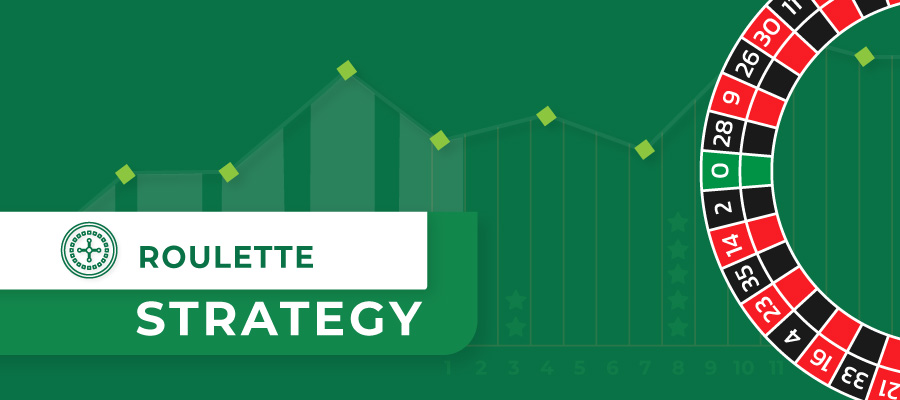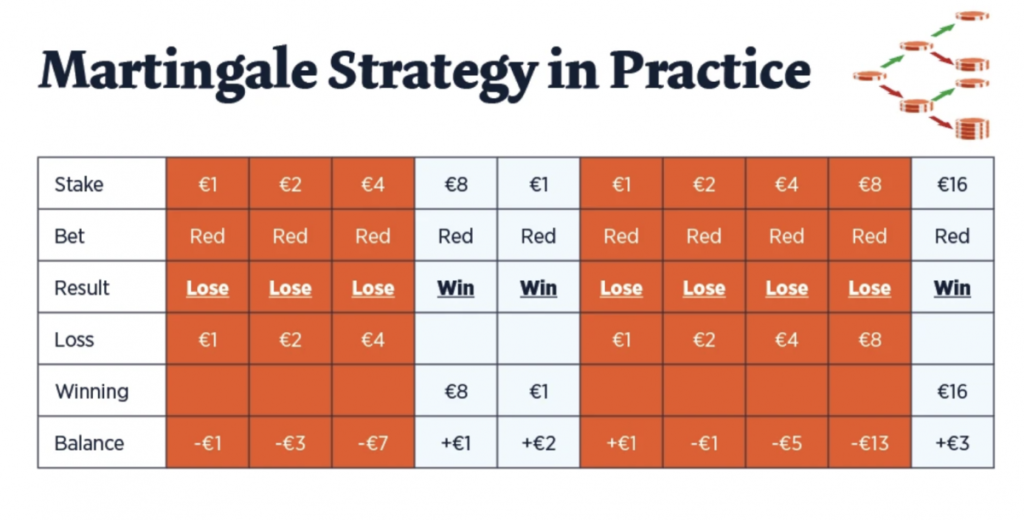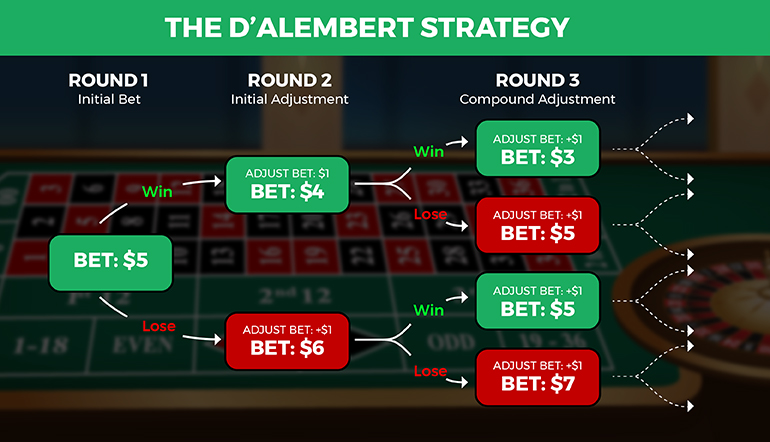For over two centuries, Roulette has been a popular casino game that has captivated the minds of players seeking the thrill of the win. Many have tried to crack the code and come up with a winning strategy, leading to the creation of hundreds of techniques, but only a few have actually been proven to work. Despite extensive analysis and retelling of every Roulette strategy, there is no foolproof approach to guarantee wins. However, with a bit of luck, players can certainly increase their chances of leaving the Roulette table with more money than they started with.

If you’re interested in improving your Roulette game, read on as we delve into the most popular strategies, their origins, and the tactics you can use to your advantage. By the end of this article, you’ll have all the knowledge you need to take on the Roulette table with confidence and skill. Are you ready to beat the odds and come out on top? Let’s get started.
The Basis of Every Roulette Strategy
There are numerous roulette strategies, each with its own unique approach to maximizing wins and minimizing losses. They all have one thing in common, all strategies are either progressive or non-progressive. In this article, we’ll cover some of the most popular roulette strategies and provide an explanation of each.
Progressive betting
Progressive betting is a betting system that involves adjusting the size of your bets based on the outcome of previous bets. The idea is to increase your bets when you’re winning and decrease them when you’re losing. This is done in the hope of maximizing wins and minimizing losses.
In a progressive betting system, the bet size increases or decreases by a fixed amount after each win or loss. For example, if you’re using a positive progressive betting system, you’ll increase your bet size after each win and decrease it after each loss. The amount by which you increase or decrease your bet is predetermined and can vary depending on the system you’re using.
Some examples of progressive betting systems include the Martingale, Reverse Martingale, and Fibonacci strategies. These strategies all involve adjusting the bet size based on the outcome of the previous bet and can provide a structured approach to gambling.
Martingale Strategy
One of the most well-known strategies is the Martingale strategy. This strategy is a simple, straightforward approach that involves doubling your bet after every loss. For example, if you bet $10 and lose, you’ll then bet $20 on the next spin, and so on until you win. The goal is to recover your losses with a single win and come out ahead.

While the Martingale can be an effective strategy in theory, it requires a significant bankroll to maintain the bets after consecutive losses. Additionally, there is no guarantee that you’ll win on the next spin, leading to a situation where you may be doubling your bets indefinitely.
How to Bet on Roulette with the Martingale Strategy?
Here is a step-by-step guide on how to bet on roulette with the Martingale strategy:
- Choose an even-money bet: The Martingale strategy works best with even-money bets such as red/black, odd/even, or high/low. These bets have the highest probability of winning, which makes them ideal for this betting system.
- Start with a small bet: Begin with a small bet, such as $1. If you win, continue with the same bet on the next spin. If you lose, double your bet on the next spin.
- Double your bet after each loss: If you lose the first bet, double your bet on the next spin. If you lose again, double your bet again. Continue doubling your bet after each loss until you win.
- Return to your original bet after a win: When you win, return to your original bet of $1. This will help you recover your losses and make a profit.
- Repeat the process: Continue betting with the Martingale strategy, doubling your bet after each loss and returning to your original bet after a win, until you have reached your desired profit or have exhausted your bankroll.
It’s important to note that while the Martingale strategy can be effective in theory, it requires a significant bankroll to maintain the bets after consecutive losses.
Fibonacci Strategy
The Fibonacci strategy is another popular roulette strategy that uses a mathematical sequence to determine the bet size. This sequence is based on the addition of the previous two numbers, starting with 1 and 1, resulting in a sequence of 1, 1, 2, 3, 5, 8, 13, 21, and so on. To use this strategy, you start by betting the first number in the sequence, and if you lose, you move to the next number in the sequence. If you win, you move back two numbers.
The Fibonacci strategy is less aggressive than the Martingale and is less likely to deplete your bankroll quickly. However, it still requires a significant bankroll and doesn’t guarantee that you’ll come out ahead in the long run.
Reverse Martingale – Paroli System
The Reverse Martingale – Paroli System, also known as the Paroli strategy, is essentially the opposite of the Martingale strategy. Instead of doubling your bet after every loss, you double your bet after every win. The goal of this strategy is to take advantage of winning streaks and minimize losses during losing streaks. For example, if you bet $10 and win, you’ll then bet $20 on the next spin. If you win again, you’ll bet $40, and so on. If you lose, you start over with your initial bet.
The Reverse Martingale – Paroli System is a low-risk strategy that can provide small wins over time. However, it’s essential to know when to walk away, as a losing streak can quickly wipe out your previous wins.
Grand Martingale
The Grand Martingale is a variation of the Martingale strategy. In this system, you double your bet after each loss and add an additional unit to the bet size. For example, if you bet $10 and lose, you’ll bet $20 on the next spin and add an extra $10, making the bet $30. The idea is to recover your losses quickly by increasing the bet size and win more than your original bet.
The Grand Martingale can be more aggressive than the Martingale, and it requires a larger bankroll to maintain the bets after consecutive losses. While this strategy can provide larger wins, it can also lead to significant losses if you’re not careful.
D’Alembert Strategy
The D’Alembert Strategy is a low-risk roulette strategy that involves increasing or decreasing the bet size by one unit after each win or loss. For example, if you bet $10 and lose, you’ll bet $11 on the next spin. If you win, you’ll decrease the bet size to $9 for the next spin. The goal of this strategy is to balance out wins and losses and come out slightly ahead over time.

The D’Alembert Strategy is a conservative approach to roulette and can provide small, consistent wins. However, the strategy doesn’t guarantee a win, and players must still be prepared to experience losses. It’s also essential to avoid chasing losses and to set a budget and stick to it.
Non-Progressive Betting
Non-progressive betting is a betting system that involves betting the same amount on each spin, regardless of the outcome of the previous bets. In contrast to progressive betting systems, non-progressive betting does not involve adjusting the size of your bets based on previous outcomes.
In a non-progressive betting system, the bet size remains constant throughout the game. For example, if you’re betting $10 on each spin, you’ll continue to bet $10 on each spin, regardless of whether you win or lose. The benefit of a non-progressive betting system is that it can help to conserve your bankroll and prevent you from losing money quickly.
Examples of non-progressive betting systems include the Flat Betting system, where the bet size remains constant throughout the game, and the 2/3 Betting system, where you bet two-thirds of your bankroll on each spin.
The Flat Betting System
The Flat Betting System is a non-progressive strategy that involves betting the same amount on each spin. This strategy is the simplest and most straightforward of all roulette systems. The idea is to maintain a consistent bet size throughout the game, regardless of whether you win or lose.
The benefit of the Flat Betting System is that it helps to conserve your bankroll and prevent you from losing money quickly. However, it may not provide as many opportunities for big wins as other betting systems. Additionally, the Flat Betting System does not take into account winning or losing streaks, and it’s important to remember that the outcome of each spin is ultimately based on luck.
The 2/3 Betting System
The 2/3 Betting System is a non-progressive strategy that involves betting two-thirds of your bankroll on each spin. The idea behind this strategy is to increase your chances of winning by betting a larger percentage of your bankroll. For example, if you have a bankroll of $100, you would bet $67 on each spin.
The 2/3 Betting System can provide a structured approach to gambling and can increase your chances of hitting a big win. However, it requires a larger bankroll and can be risky if you experience a losing streak. Additionally, it’s important to remember that the outcome of each spin is ultimately based on luck, and there is no guaranteed way to win at roulette.
Neighboring Numbers Strategy
The Neighboring Numbers Strategy is a non-progressive roulette betting system that involves betting on groups of numbers that are close to each other on the roulette wheel. The idea is to cover more numbers with each bet, which can increase your chances of winning.
To use the Neighboring Numbers Strategy, you’ll need to place your bets on groups of numbers that are close to each other on the roulette wheel. For example, you could bet on all the numbers in a particular section of the wheel, or all the numbers that are adjacent to a certain number.
The Neighboring Numbers Strategy can provide a structured approach to gambling and increase your chances of hitting a win. However, it does not guarantee that you’ll win, and it’s important to remember that the outcome of each spin is ultimately based on luck.
James Bond Strategy
The James Bond Strategy is a non-progressive roulette betting system that involves placing specific bets on the roulette table. This strategy was made famous by the fictional character James Bond in the book “Casino Royale.”

To use the James Bond Strategy, you’ll need to place three bets on each spin. The first bet is a $14 bet on the numbers 19-36, the second bet is a $5 bet on the number 13-18, and the third bet is a $1 bet on the number 0.
The James Bond Strategy can provide a structured approach to gambling and increase your chances of hitting a win. However, it does not guarantee that you’ll win, and it requires a larger bankroll to maintain the bets after consecutive losses.
Advantages and Disadvantages of Using a Roulette Strategy
Using a roulette strategy can provide a structured approach to gambling and increase your chances of winning. However, there are also advantages and disadvantages to using a roulette strategy, which we will discuss below.
Advantages of Using a Roulette Strategy:
- Increased chances of winning: A well-executed roulette strategy can increase your chances of winning by helping you make more informed bets and minimize losses.
- Bankroll management: Using a roulette strategy can help you manage your bankroll more effectively by setting clear limits and boundaries for your bets.
- Structured approach to gambling: A roulette strategy can provide a structured approach to gambling, which can be helpful for those who prefer a more systematic approach.
Disadvantages of Using a Roulette Strategy:
- No guaranteed wins: No roulette strategy can guarantee that you will win every time you play. The outcome of each spin is ultimately based on luck.
- Higher risk of losing: Some roulette strategies involve more aggressive betting patterns that can be risky, particularly for those with limited bankrolls.
- False sense of security: Using a roulette strategy can sometimes give players a false sense of security, leading them to believe that they are more likely to win than they actually are.
In conclusion, using a roulette strategy can be a helpful tool for those looking to increase their chances of winning and manage their bankroll more effectively. However, it’s important to remember that no strategy can guarantee a win and that the outcome of each spin is ultimately based on luck. As with any form of gambling, it’s essential to gamble responsibly and only with money you can afford to lose.
